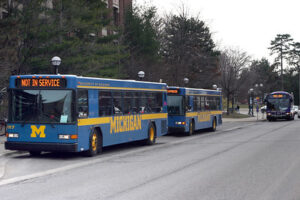Earlier this week, the National Student Clearinghouse Research Center (NSCRC) released updated data on persistence and retention among college students. Not surprisingly, community colleges suffered a significant drop in retention compared to last year. Overall in 2019, 74% of college freshmen returned to take classes (at any institution) the following year. Community college freshmen, however, returned at a much lower rate. Just 58.5% of first-time community college students returned for classes the next year.
The persistence rate accounts for students who transfer from one institution to another. Full-time college students were more likely to transfer than part-time students. That’s an important observation for community college students because most 2-year students attend classes part-time. The persistence rate among part-time students was 7.5%.
The persistence rate varied widely by race. Asian and Caucasian students were most likely to persist at any institution. Hispanic and Black students were far less likely to continue their educations (anywhere).
Also not surprising, full-time students age 20 and under were most likely to persist than their part-time counterparts. Students over the age of 25 were most likely to drop out. There are many reasons students don’t return. But when they leave in such large numbers, it would benefit community colleges to find out why students leave.
Retention of students raises revenues, too
Focusing on retention – finding out why students don’t return and increasing the number who stay – can help boost enrollment. Even with the extra money required to discover and address the things that cause student to leave, this approach costs less and poses less financial risk to the taxpayers than pursuing “other revenue” strategies. “Other revenue” strategies – particularly those that require bond issues and long-term repayment, do little more than raise the cost of attendance for students.
Increasing the cost of attendance makes it more difficult for students from households with marginal incomes to enroll or remain enrolled. Rather than increasing the overall amount of revenue coming into the institution, the pursuit of “other revenue” merely transfers revenue on the balance sheet from tuition and fees to unrelated activities.
Retaining students can be as simple as increasing financial aid, forgiving debt, providing transportation or childcare, providing laptops or low-cost Internet access, or helping students meet basic needs so that they do not have to work as much during the semester. Studies have shown a direct correlation between dropping out and the number of hours a student works during the semester. Students who attend classes part-time and work full-time or near-full-time are at the greatest risk of leaving school before they complete a degree. Often, the decision to leave school boils down to lack of time or lack of money. Offering support services that help students stay in school are more likely to offer a larger return-on-investment than side projects not related to the College’s primary mission.
As we emerge from the pandemic, it will be more important than ever to reconnect students to their post-secondary plans. Now is not the time to take money away from the mission to chase after minimal “other revenues.”
Photo Credit: Sandia Labs , via Flickr































